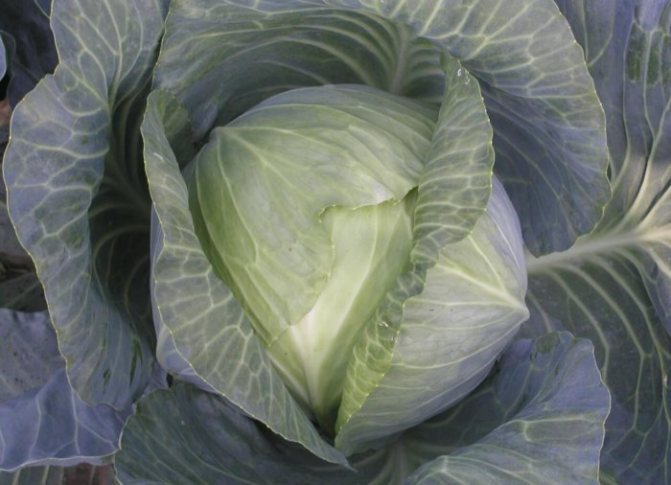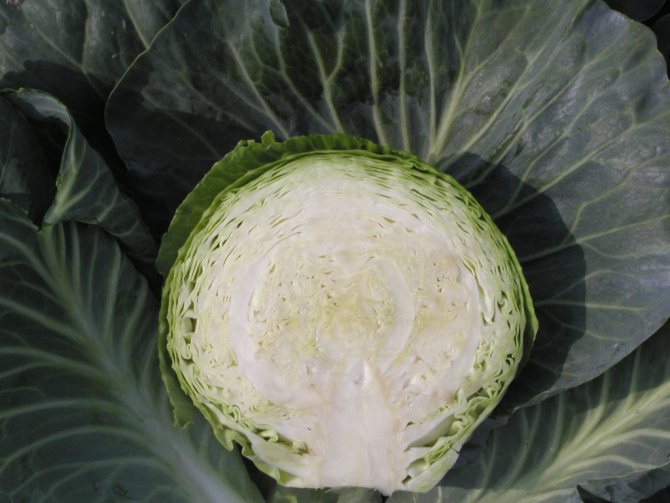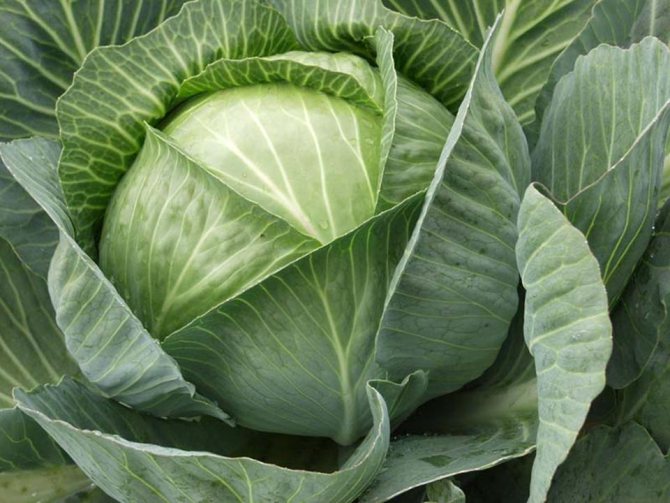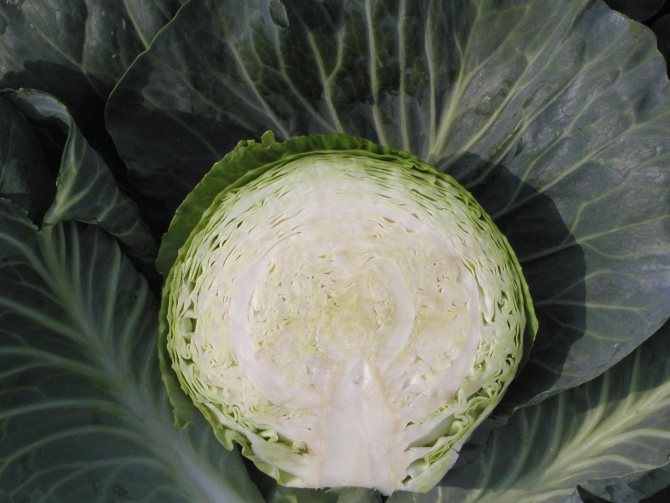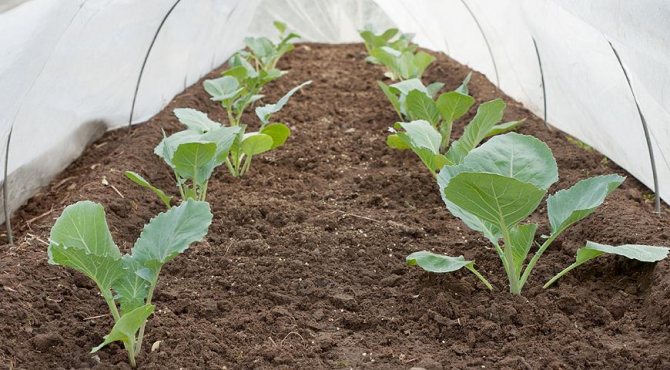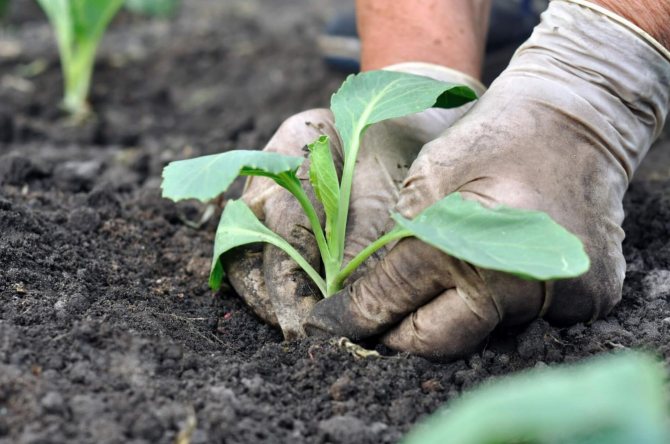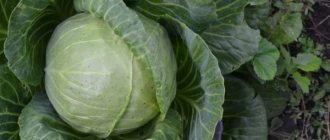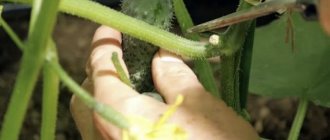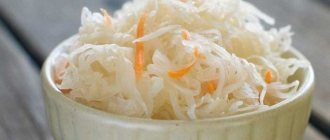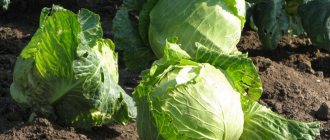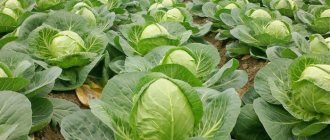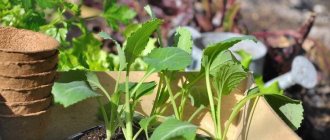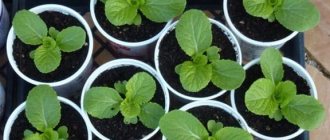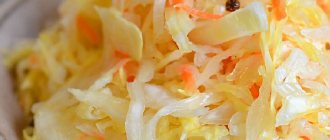Description of the variety and characteristics of the Atria cabbage
Late ripening variety. From the moment of emergence of full shoots and until reaching technical ripeness, 137-147 days pass. The yield is high - 34.6-104.6 tons per hectare. Cabbage is slightly affected by gray rot.
Heads of cabbage of Atria are very dense, with a fine structure reaching medium. The shape is round or round-flat with half-open leaves. The color of the covering leaves is medium green up to gray, the color of the head of cabbage is whitish on the cut. The internal stump is medium, but more often short. The mass of a head of cabbage is in the range of 1.5-3.7 kg. The taste of fresh cabbage leaves is excellent and good. Heads of cabbage are resistant to cracking. The purpose of the fruit is universal. Atria cabbage is consumed both fresh and sauerkraut or salted. The variety has good transportability. The shelf life of products is six months.
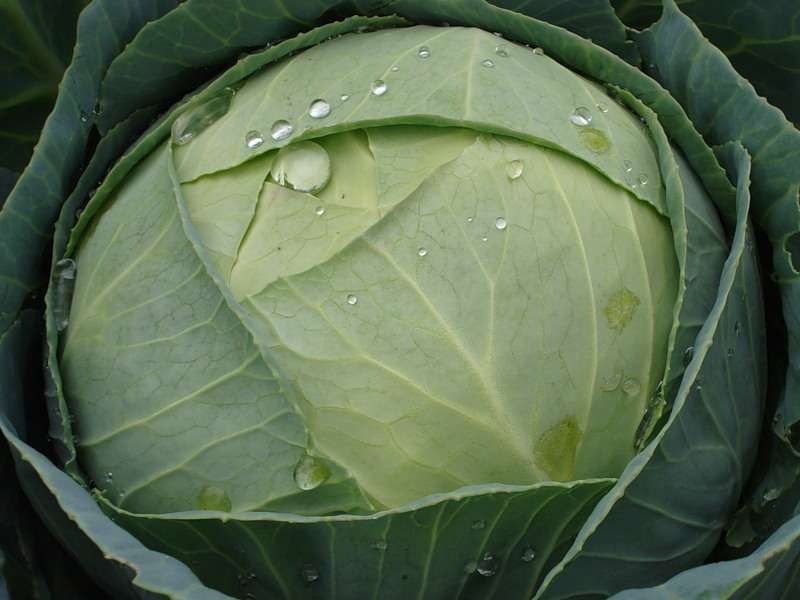
Atria cabbage cover leaf color - medium green to gray
Video: a review of Atria cabbage from the manufacturer
Hybrid advantages
Due to the huge number of advantages, Atria cabbage is one of the most cultivated in the territory of the Russian Federation.
The hybrid is not particularly whimsical to care for and easily adapts to climatic conditions and the type of soil. Also, as noted earlier, this is a fairly strong variety that is not afraid of most of the known cabbage diseases.
One of the main advantages of Atria can be considered a gradual improvement in taste. While most varieties of cabbage taste worse and worse with each month of storage, the taste of this hybrid only improves. This makes it a competitive product in the market at a later time.
Heads of cabbage have an attractive presentation. In addition, due to the even shape of the cabbage, it is easy to transport it over long distances, without loss of quality.
Atria (F1) is a predictable variety. He always gives a stable harvest.
Highlights and features of growing Atria cabbage
Cabbage is not the easiest vegetable to grow. To get a good harvest of high-quality fruits, you should first study certain rules of agricultural technology.
Site preparation for planting
First you need to choose a suitable place for the cabbage. The following requirements are imposed on him:
- The place should be sunny. Even a slight partial shade will lead to increased leaf growth and poor head formation.
- Among the predecessors over the past three years, there should be no cruciferous plants - radishes, turnips, radishes, cabbage and other representatives.
- Cabbage grows well in areas where tomatoes, cucumbers, legumes, onions, and potatoes grew before.
- The soil should be loose and non-acidic - acidic soils are unacceptable for cabbage, they must first be deoxidized by adding dolomite flour or lime.
It is worth taking care of the preparation of the beds for cabbage in the fall. To do this, the soil is dug up on it or plowed up with the simultaneous incorporation of fertilizers. Introduce 5-10 kilograms of humus per square meter, as well as 30-40 grams of superphosphate and 3-4 liters of wood ash.
Planting seedlings in the beds
This stage is usually started at the beginning of May.Before planting, the beds should be marked out on the basis that the rows of plants should be at a distance of 60-70 centimeters from each other, and cabbage in the rows should be at an interval of 40-45 centimeters. After marking, holes of sufficient size are prepared, one liter of humus or compost is poured into them, as well as one glass of ash and mixed. Well water the wells with water and when it is absorbed, seedlings are planted in them. If the seedlings were in plastic cups, they must first be removed with a lump of earth. There is no need to remove seedlings from peat glasses. The hole is covered with earth around the roots and watered.
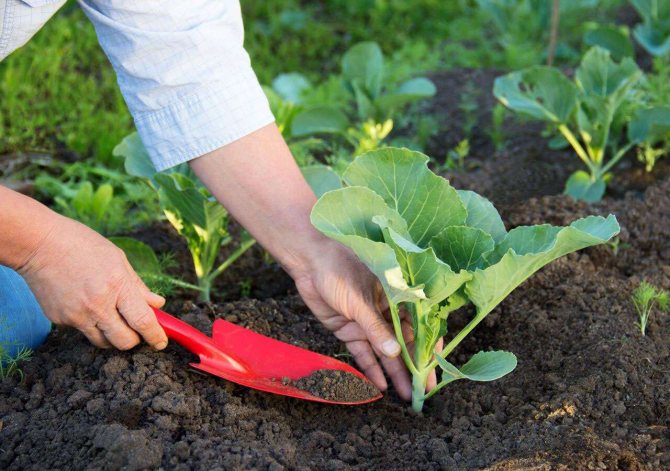

Seedlings are planted when five to six true leaves appear
Growing cabbage with a seedling method
This method can only be used to grow cabbage in the southern regions. The preparation of the beds and seeds is carried out in the same way as with the seedling method. The difference is that the seeds are sown directly on the garden bed. In the southern regions, this is done in mid-April, and in more northern regions, at the end of April and even at the beginning of May. 2-3 seeds are sown in each hole, and after the emergence of shoots, one of them is left the strongest, the rest are pinched at the soil level. After sowing, the seeds are lightly sprinkled with earth and moistened. Then the bed is covered with a black film until shoots appear. At the same time, the soil moisture is periodically monitored - it should not dry out. After emergence, the film is removed. When the cabbage stretches out a little, sprinkle it with earth to the level of the first real leaf.
Watering and feeding
We will not dwell on these stages in detail, since the approaches to watering and feeding Atria cabbage do not differ from the approaches when growing other varieties of cabbage. It is important to remember about the moisture-loving nature of cabbage, but do not forget that excess moisture leads to the development of fungal diseases, and is also a favorable environment for slugs.
Harvesting and storage
Atria will most likely be ready for harvesting by mid-October. You can determine readiness by simply feeling the heads - when they become dense and do not shrink, the cabbage can be harvested. In the northern regions, it happens that the crop is not harvested before frost. You should know that standing cabbage can easily tolerate frosts down to -7 ° C. If frosts overtake her already cut, then the heads of cabbage will deteriorate. Therefore, you need to wait until the temperature rises and the leaves thaw and only then separate the heads from the stumps.
Heads of cabbage harvested at air temperatures ranging from +4 ° C to +7 ° C will be stored better and longer. Late cabbage, which is Atria, is usually pulled out of the ground by the roots, the integumentary leaves are allowed to wither and cut with a knife, leaving 3-4 centimeters of the outer stump.
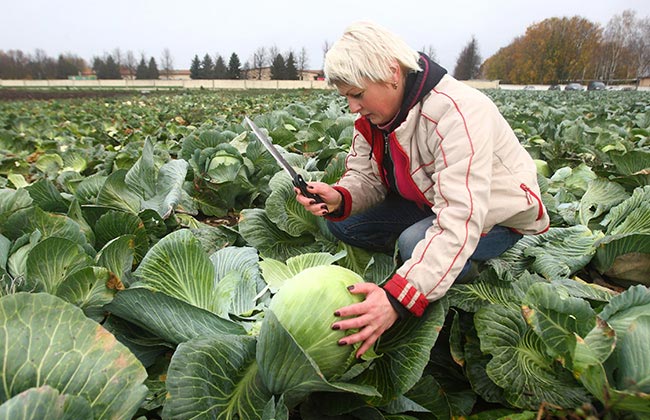

The heads of cabbage that have been harvested at air temperatures ranging from +4 ° C to +7 ° C will be stored better and longer.
Before storing, the heads of cabbage are sorted. Loose ones are used for salting, and dense tight heads are placed in the cellar for storage. For storage, the best temperature would be -1 - +2 ° C. In this case, the air humidity should be in the range of 90-98%. A higher storage temperature causes rot, and at a lower temperature, the heads of cabbage freeze and, when thawed, quickly deteriorate.
Do not store cabbage in bulk on the floor - this will lead to the development of rot. Wooden shelves are best suited for storage, on which the heads are stacked in one row, stumps up. If there is not enough space, you can tie the heads of cabbage in pairs by stumps and hang them on jumpers or hooks in the ceiling.
Plant care
The culture is not too demanding to care for. The basic rule is a sufficient amount of water. After fertilization in the phase of having 2-3 pairs of leaves, the plants will need to be fed only 3 times.
Watering features
Young plants are watered every 2-3 days, adding 8 liters of water per m². From the moment of setting the head of cabbage, watering is carried out every 5-7 days, increasing the amount of water to 12 l / m². Watering is completely stopped a month before the expected harvest. Moisture is introduced into the furrows located between the rows. Effective when growing cabbage drip irrigation. In this case, a tape system is passed through the furrows, which, through special dispensers, delivers water directly to the roots.
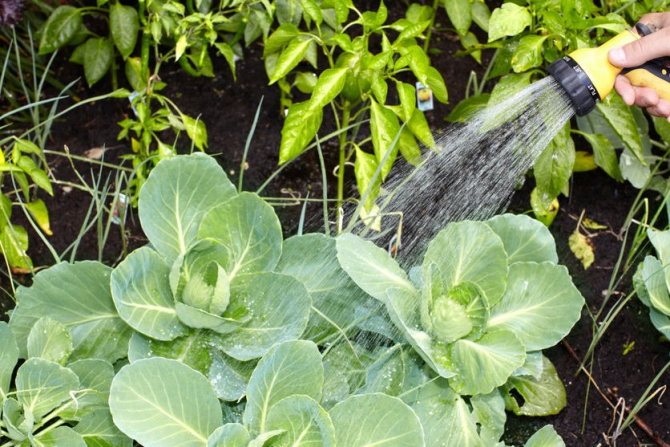

Fertilization
The fertilization scheme is as follows:
- 2 weeks after fertilizing the sprouts, in the phase of having 8 leaves - manure solution, 500 ml per well (add 1 kg of manure to 10 liters of water);
- in the phase of laying heads of cabbage - ash solution, 1 liter per well (for 10 liters of water, 500 g of ash);
- a month before harvesting - iodine solution, 1 liter per bush (add 40 drops of iodine to 10 liters of water).
Soil loosening and hilling
Hilling is carried out 2 times.
For seedling growing:
- 20 days after transplant;
- in the head formation phase.
With seedless:
- in the phase of having 4–6 sheets;
- in the head formation phase.
Did you know? Already in Hellas, 3 varieties of cabbage were grown. This is evidenced by descriptions found in the writings of a Greek physician and mathematician entitled "Treatise on Herbs."
The hilling procedure involves the formation of a mound around the stem up to the beginning of the lower leaves. This move increases the plant's resistance by accelerating the growth of additional roots. Loosening of the soil is carried out regularly, after each moistening of the soil, artificially or naturally. Near the plants, the soil is loosened to a depth of 5 cm, in row spacings - 10 cm. In parallel with the aeration of the soil, weeds are removed.
Diseases and pests are the main representatives
As practice has shown, timely implementation of measures to prevent possible diseases and pests allows you to grow healthy cabbage and get a harvest of excellent quality without additional effort. For prevention, crop rotation, timely soil deoxidation, a balanced moisture regime, as well as treatment with systemic fungicides and insecticides should be observed.
Possible diseases of cabbage
Among the main representatives of cabbage diseases are the following:
- Blackleg. As a rule, it affects young sprouts of seedlings, but the disease is also possible in adult plants. It is manifested by the formation of stem wateriness in the root zone, then the stem becomes thinner and breaks.
- Keela. Spreading through the soil, it affects the roots of cabbage, on which growths and nodules appear. In the future, the roots rot and the plant dies. The first outward signs are yellowing of the leaves and looseness of the heads.
- Peronosporosis (downy mildew). The disease often occurs on acidic soils when growing seedlings in greenhouses if the normal heat and humidity regime is not observed. Signs of the disease are the appearance of brown or yellow spots on the front surface of the leaves, and a light gray bloom on the back.
Photo gallery: signs of possible diseases of cabbage
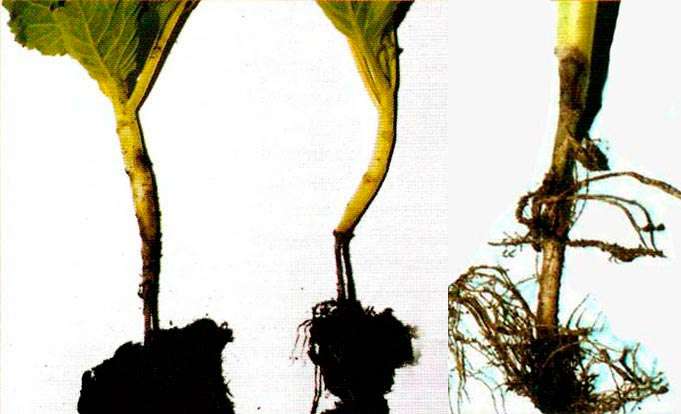

Blackleg, as a rule, affects young sprouts of seedlings, but the disease is also possible in adult plants.
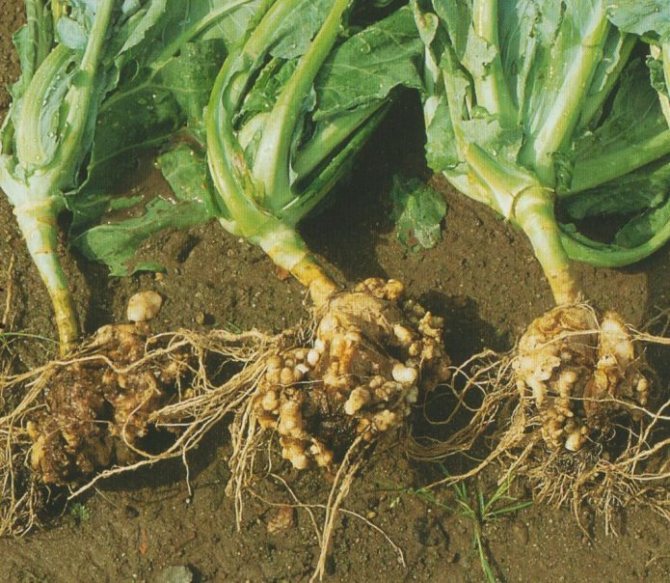

Keela, spreading through the soil, infects cabbage roots
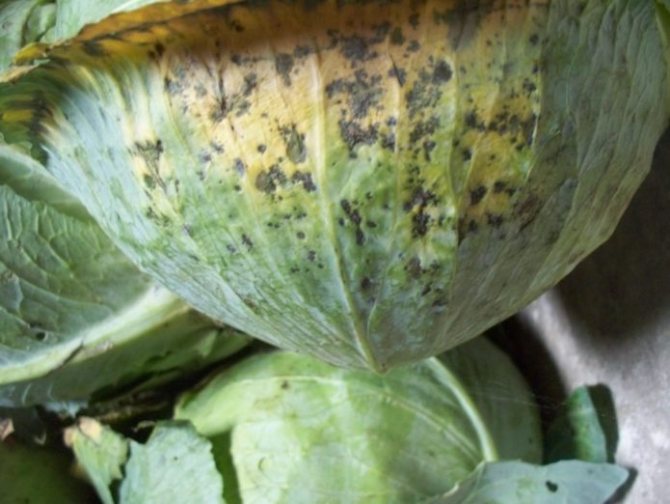

A sign of peronosporosis is the appearance of brown or yellow spots on the front surface of the leaves.
Possible pests of cabbage
There are many insects that like to feast on juicy cabbage leaves:
- Most often the gardener encounters slugs. Reproducing rather quickly, these pests hide during the day in damp secluded places, for example, in mulch or inside cabbage leaves, and at night they intensively eat them. Fighting this scourge is a separate topic, which is devoted to many articles, discussions on forums and other resources.When slugs appear, first of all, they refuse to mulch the beds, and also collect pests by hand and destroy them.
- Cabbage fly larvae damage the roots of the cabbage, which becomes lethargic and bluish. You can scare off these insects by planting marigolds, dill or calendula near the garden.
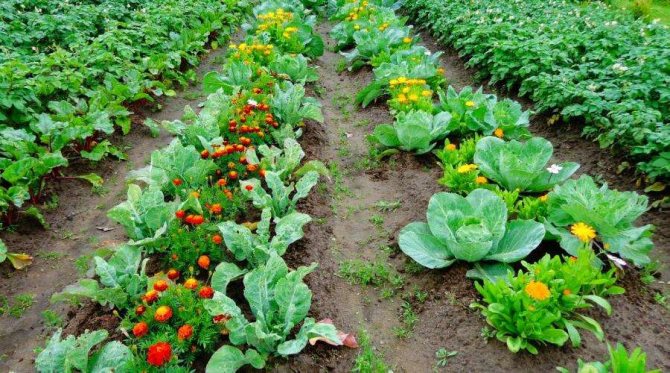

You can scare off a cabbage fly by planting marigolds, dill or calendula near the garden
- Whitefly - a small butterfly with a body length of only 2-3 mm, is a carrier of various infections and, first of all, a sooty fungus. Cabbage leaves affected by such a fungus are first covered with a white coating, which later turns black. As a result, cabbage loses its presentation and becomes unusable.
- Aphids are a frequent visitor to cabbage. It settles on the inside of the leaves and feeds on their sap. To combat, you can use numerous folk remedies, as well as bioinsecticides such as Spark Bio, etc.
Photo gallery: probable pests of cabbage


Slugs feed on juicy cabbage leaves
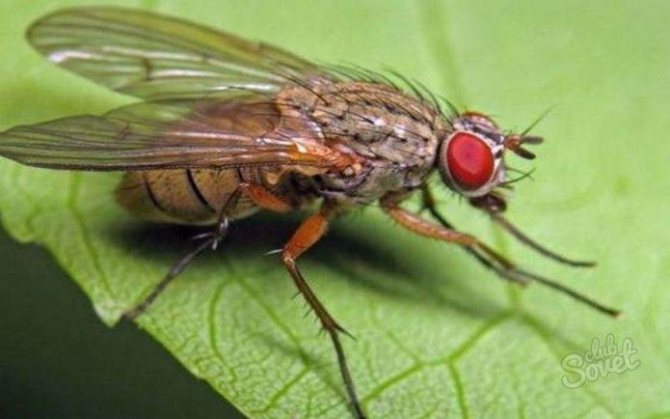

The cabbage fly lays eggs, from which the larvae emerge and infect the cabbage roots
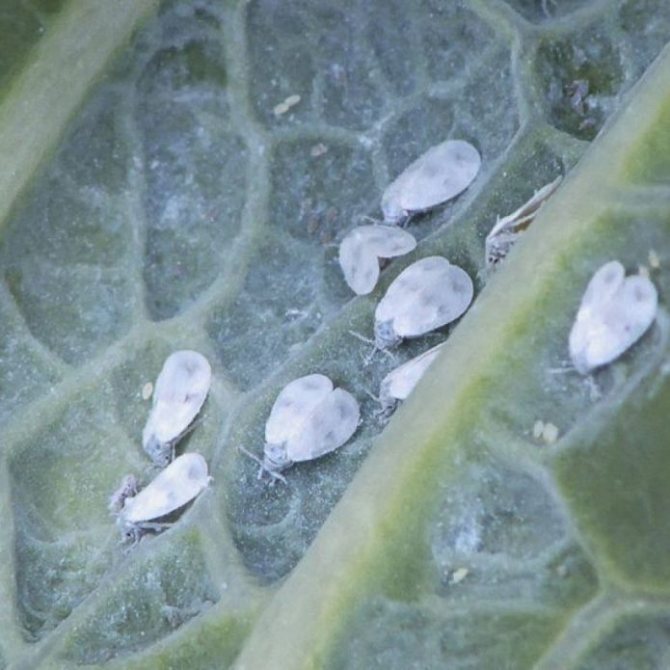

Whitefly is a carrier of various infections
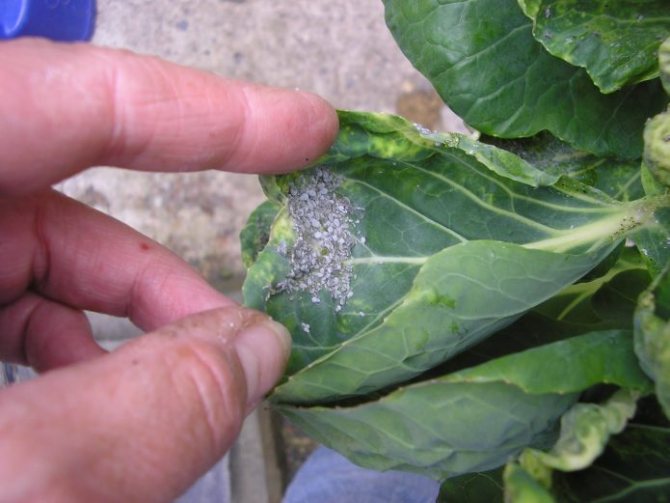

Aphids feed on cabbage juice
Reviews of gardeners
Atria is my favorite cabbage, I will grow it for the fifth season, it is perfectly stored, juicy, sweet, which is surprising for varieties with good keeping quality. Unfortunately, its properties are highly dependent on the manufacturer.
Nadezhda AA
We have been growing Atria for 10 years and are not going to give it up yet, and Novator won sympathy in a couple of years. Both hybrids have not cracked this season, unlike the Aggressor. Ankoma also showed itself well, it is larger (4–6 kg) and is slightly worse stored.
Mykola
I have been growing Atria for seven years now. This year I ate it until July. Great cabbage.
Linam
This season, for the first time, I grew a hybrid of Atria, so it almost immediately followed the early one. They made stuffed cabbage rolls out of it, very tasty. I did not even expect that it would be so tender, the leaf is not felt. So this is cabbage intended for fresh consumption.
kolosovo
By growing cabbage of the Atria F1 variety, you can get an excellent harvest in a small area, especially since the hybrid has been cultivated in gardens and fields for more than 20 years and its popularity has not decreased over the years. Farmers and gardeners do not stop wondering about the genetic characteristics of this variety, and admiring its taste.
Testimonials
I recommend trying Atria and Novator - hybrids that are perfectly stored, while juicy, perfect for salads and pickling. We have been growing Atria for 10 years and we are not going to give it up yet, and Novator won sympathy in a couple of years. This season, both girids have not cracked, unlike Aggressor.
Mykola
Quote: Ivanovochka from March 27, 2020, 08:55:49 am when growing cabbage does not like heat, put it in the refrigerator for the night, otherwise it stretches very much, and so quickly that you may not have time to adapt a dish for long legs, mine rose at room temperature here she ascended and swooped down, now stands on the street, put it in a box, covered it with a film and free. Home in the evening. This is how I am having fun from the early days, and I sowed the late one only yesterday.
Thanks a lot for the advice! My Atria ascended, no problem on the 4th day. Now I understand what my mistake was.
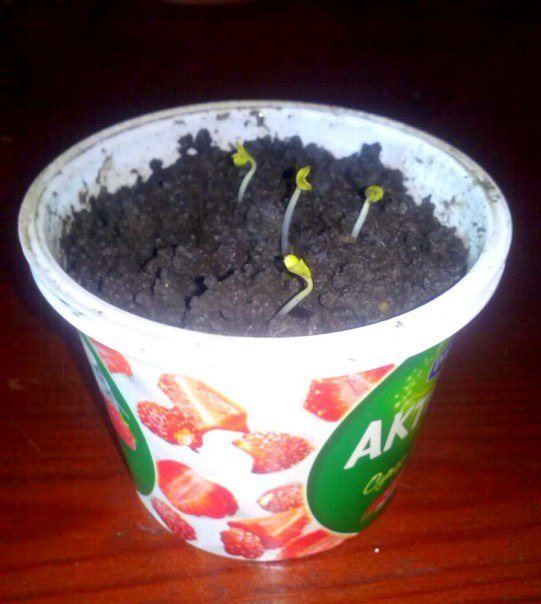

My Atria ascended, no problem on day 4
Najma
We planted Atria and Kilaton, but we like Megaton better.
Tatiana77
This is the kind of Atria that was born with us
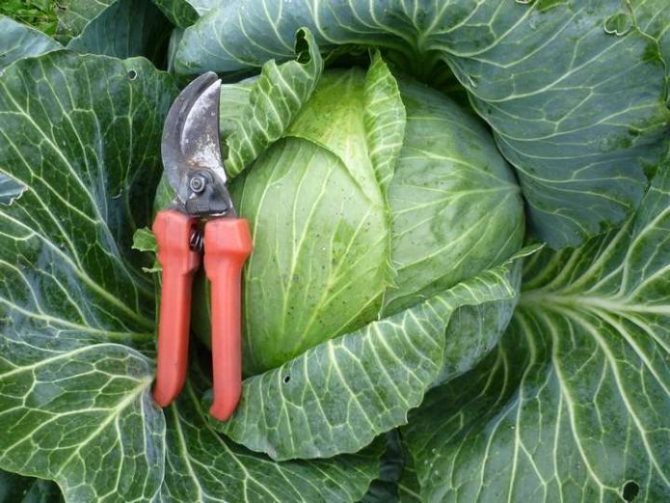

This is the kind of Atria that was born with us
tep, Ryazan region
Atria cabbage is loved by both consumers and farmers. The feasibility of its cultivation is due to its high yield, product attractiveness, unpretentiousness, taste and versatility of use. Excellent transportability and a fairly long shelf life are also important arguments in favor of Atria.
Agrotechnics
Sowing seeds begins in mid-April. The planting depth is 1-2 cm.If you follow the sowing plan of 50 × 50 cm, then there is an opportunity to get a high yield, which reaches 10 kg per 1 sq. m. After 25 days, 2-3 leaves appear. When there are more than five of them, you can transfer the seedlings to open soil. This happens around the end of May. The fruits are considered ripe on the 140th day after full germination.
Late-ripening cabbage Moscow late grows truly gigantic. More about the variety ...
Growing Atria cabbage is a snap. Doesn't take a lot of time and effort. But it gives amazing results: high yield, marketable appearance and pleasant taste. Try this hybrid on your backyard and share the results with us. Undoubtedly, they will be great, because the reviews about the Atria F1 cabbage are only positive.



